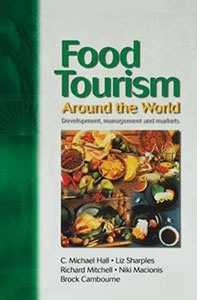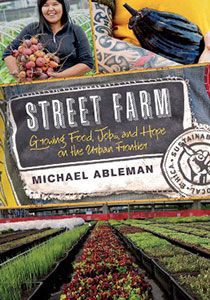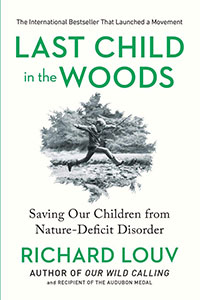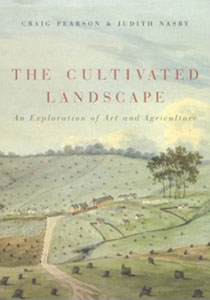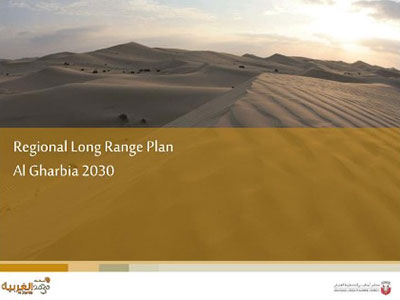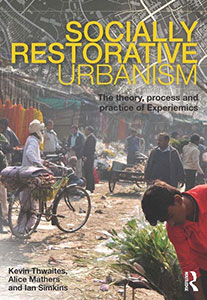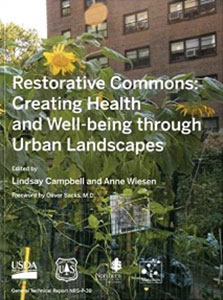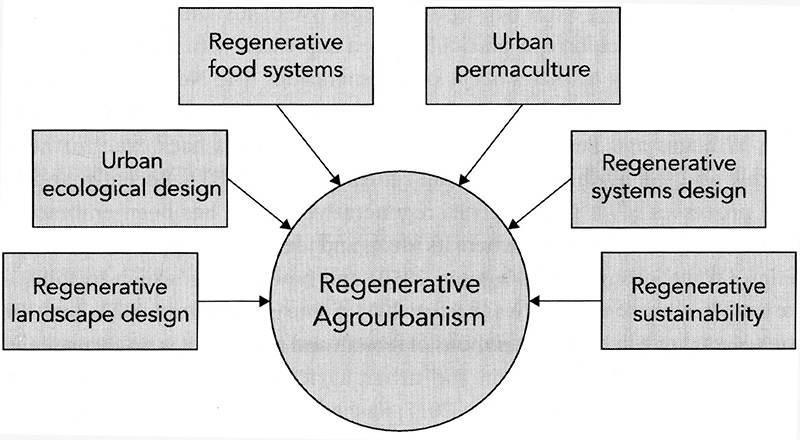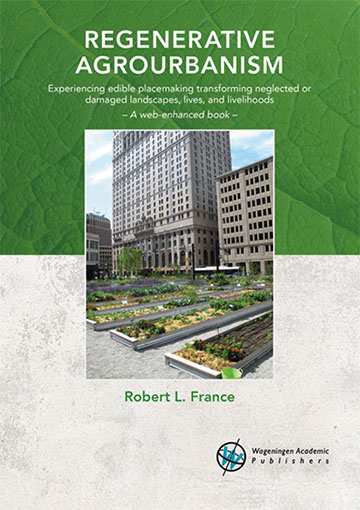
INSIDE FEATURES
Regenerative Agrourbanism
Experiencing edible placemaking transforming neglected or damaged landscapes, lives, and livelihoods
A web-enhanced book
Part 1 Background
Chapter 1. Place – Plants – People: the paradigm of regenerative agrourbanism as waymarked through ten formative books
“This chapter is based on the idea that the description and development of a scholarly thesis can be aided through a process of ‘literary waymarking’ (France 2020). In the present case, salient elements from ten texts are absorbed into forming the paradigm of regenerative agrourbanism. This is illustrated through two infographics, wherein the nucleus of core concepts is represented by a couplet of books about holistic urban agriculture and a second couplet of books about holistic environmental restoration (Fig. 1.1). Added to this and contributing to the whole are the radial constituents represented by six other books, each containing the word ‘regenerative’ in its title (Fig. 1.2).” (pg. 23-24).
Chapter 2. Narrative scholarship and peripatetic phenomenology as landscape research
Part 2: Site Tours
Chapter 3. Healing economies: business and tourism
Chapter 4. Healing connections: hope and education
Chapter 5. Healing art: beautifully grown food
Chapter 6. Healing heritage: restoring agri-culture
Chapter 7. Healing sites and societies: regenerative landscape design
3.1 COMMERCIAL ENTERPRISES
- London Cru Urban Winery (London, UK)
- Brother Nature Produce (Detroit, MI, USA)
- Hope Blooms (Halifax, NS, Canada)
- Dill’s Pumpkin Farm (Windsor, NS, Canada)
- Fresh City Farms (Toronto, ON, Canada)
- Very Local Greens (Dartmouth, NS, Canada)
- Food from the Sky (London, UK)
- GrowUp Box Urban Farms (London, UK)*
- FARM:shop (London, UK)
- Valley Grown Salads (Harlow, UK)*
- Zero Carbon Food (London, UK)
- Lufa Farms (Montreal, QC, Canada)
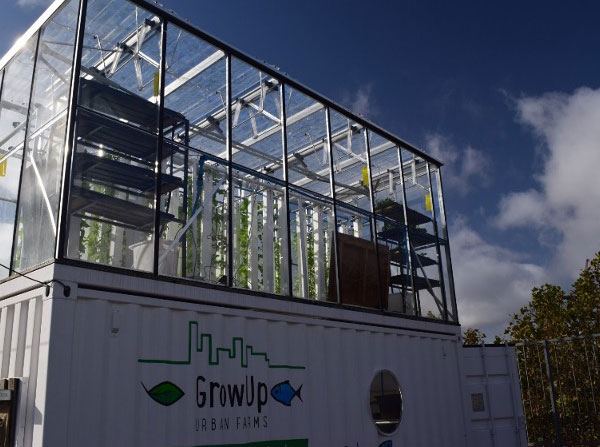
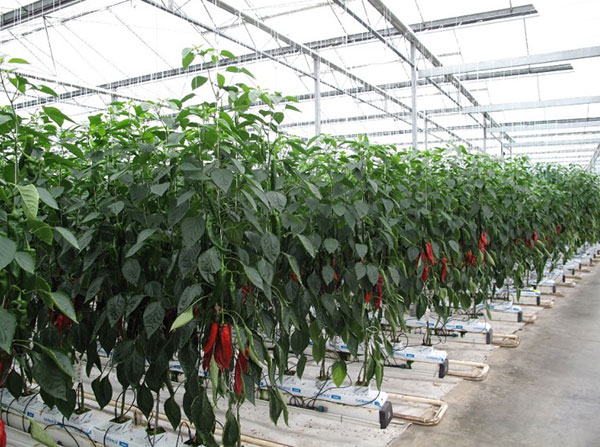
3.2 FOOD MARKET TOURISM
- Plaza de Armas (Ancud, Chile)
- The Goods Shed (Canterbury, UK)
- Kensington Market (Toronto, ON, Canada)
- Haymarket (Boston, MA, USA)
- Farmers’ Markets (Halifax, NS, Canada)
- Eastern Market (Detroit, MI, Canada)
- Feria Alcalde Jose Sandoval Gomez (Castro, Chile)
- St. Lawrence Market (Toronto, ON, Canada)
- Mercado do Bolhão (Porto, Portugal)*
- El Mercado Central (Valencia, Spain)
- Borough Market (London, UK)
- Mercado de La Boqueria (Barcelona, Spain)
- Markthal (Rotterdam, Netherlands)*
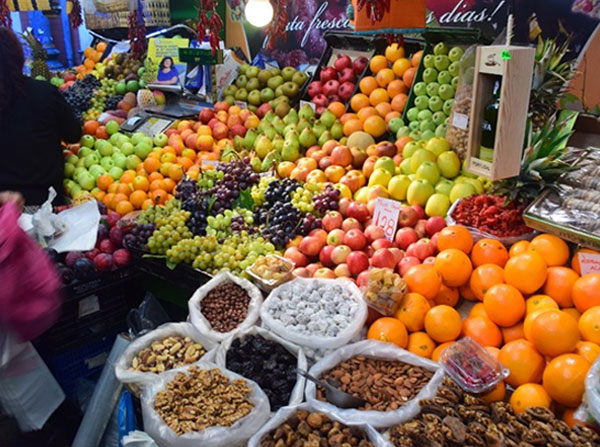
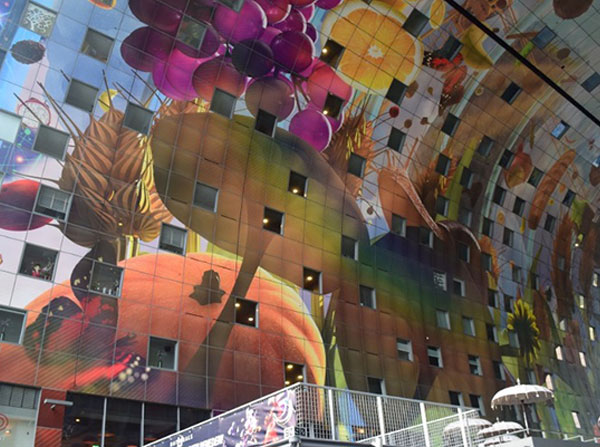
4.1 COMMUNITY SUSTAINING GARDENS
- Cultivate London (London, UK)
- The Stop’s Earlscourt Community Garden and Food Centre (Toronto, ON, Canada)
- D-Town Farm (Detroit, MI, USA)
- Regent Park Health Centre Community Garden (Toronto, ON, Canada)
- Aghios Dimitrios Municipal Garden (Athens, Greece)
- Brightmoor Alliance Youth Garden (Detroit, MI, USA)
- Southside City Farm (Providence, RI, USA)
- Kipos3 Community Garden and Urban Vineyard (Thessaloniki, Greece)*
- Common Roots Urban Farm (Halifax, NS, Canada)*
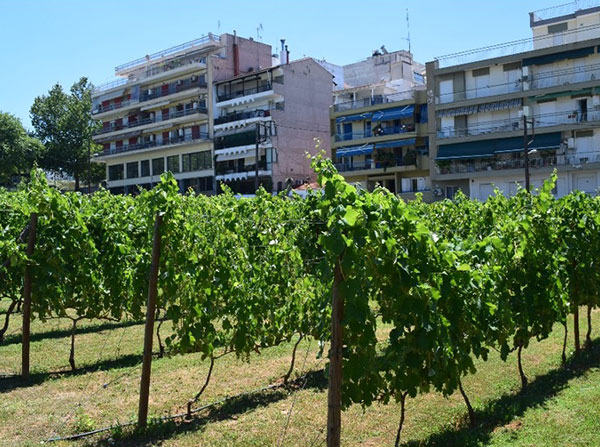
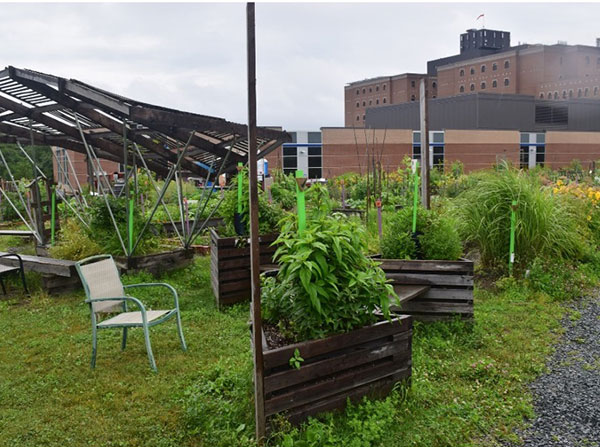
4.2 EDUCATIONAL FARMS
- Kentish Town City Farm (London, UK)
- Hackney City Farm (London, UK)
- Vauxhall City Farm (London, UK)*
- Surrey Docks City Farm (London, UK)
- Mudchute Park and Farm (London, UK)
- Spitalfields City Farm (London, UK)*
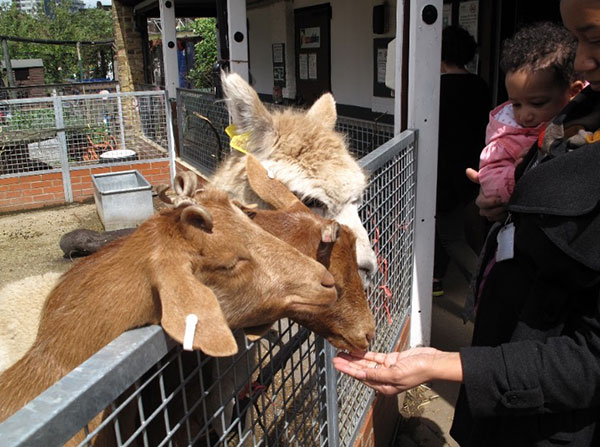

5.1 ART-FILLED GARDENS
- Dalston Eastern Curve Garden (London, UK)*
- Fenway Victory Gardens (Boston, MA, USA)*

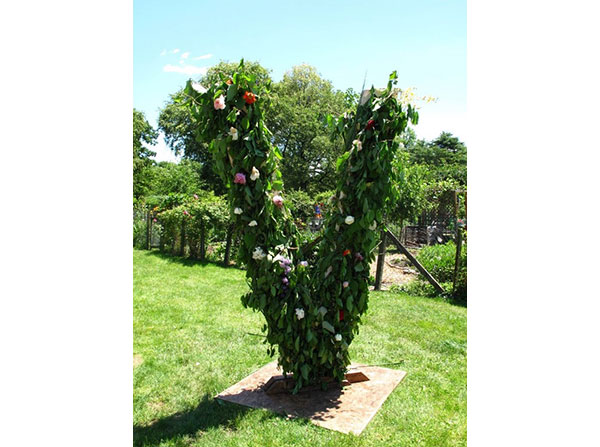
5.2 ARTFUL GARDENS
- Edible Estates (London, UK)
- The Edible Bus Stop (London, UK)*
- Abbey Gardens (London, UK)
- Carrot Green Roof (Toronto, ON, Canada)
- Lafayette Greens (Detroit, MI, USA)*
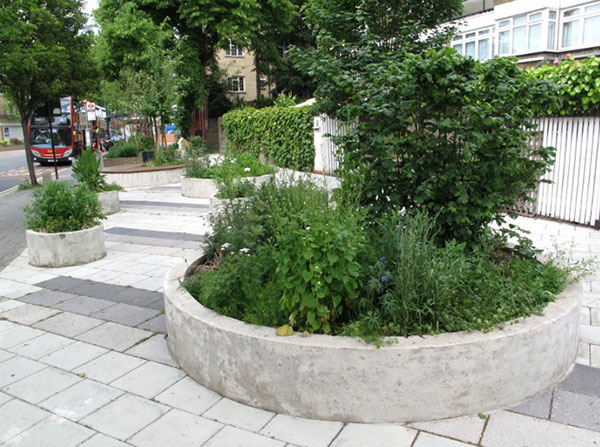
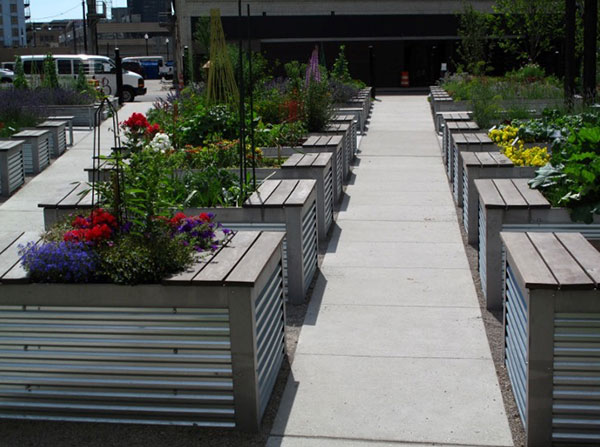
6.1 HERITAGE AND HEALING
- Spryfield’s Kidston Urban Farm (Halifax, NS, Canada)
- Zorbis Office and Apartment Building (Athens, Greece)
- Chiswick House Kitchen Garden (London, UK)*
- Riverdale Farm (Toronto, ON, Canada)
- Cole Harbour Heritage Farm Museum (Halifax, NS, Canada)*
- Norsk Folkmuseum (Oslo, Norway)
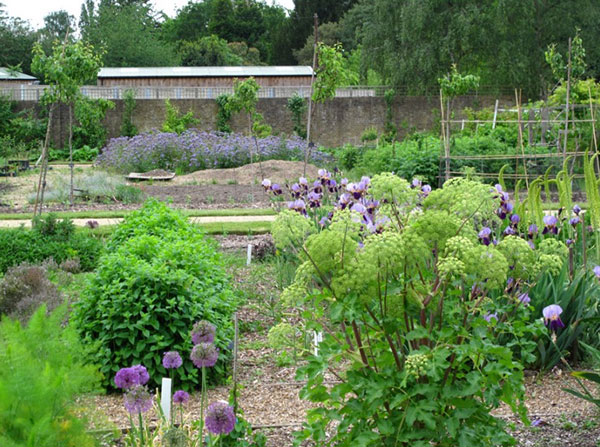
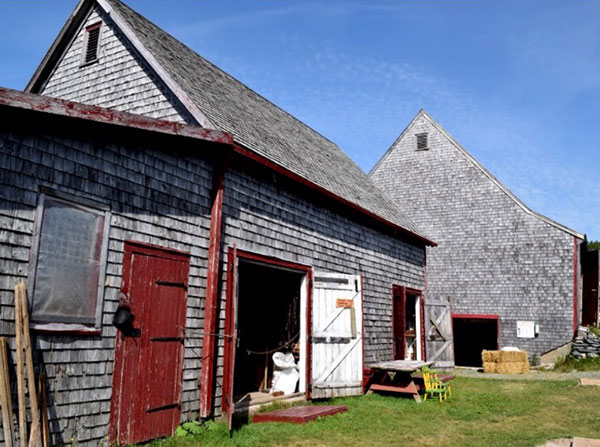
6.2 CIVITAS
- Woodlands Farm Trust (London, UK)
- Farm Centre’s Legacy Garden (Charlottetown, PEI, Canada)
- Mikveh Israel Agriculture School (Tel Aviv, Israel)
- Les Hortillonnages (Amiens, France)*
- Yedikule Gardens (Istanbul, Turkey)
- Parc Agrai de Baix Llobregat (Barcelona, Spain)*
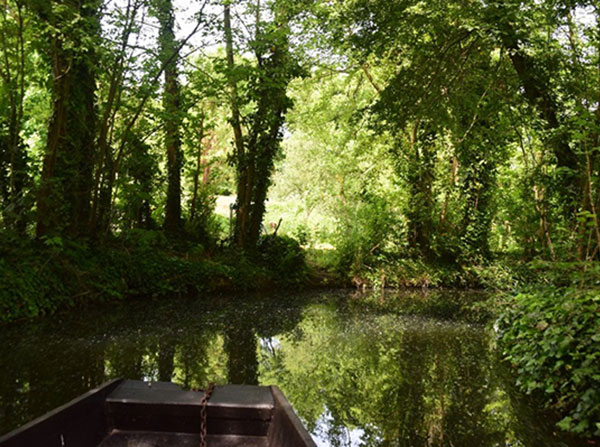

7.1 STRUCTURES AND SITES
- 60 Richmond Street Housing (Toronto, ON, Canada)
- King’s Cross Central Skip Garden (London, UK)
- Hellinikon Airport Community Garden (Athens, Greece)
- Greensgrow Farms (Philadelphia, PA, USA)
- Evergreen Brick Works (Toronto, ON, Canada)
- Artspace Wychwood Barns (Toronto, ON, Canada)*
- Allen Street Community Gardens (Boston, MA, USA)
- PERKA (Thessalonki, Greece)*
- Mill Creek Urban Farm (Philadelphia, PA, USA)
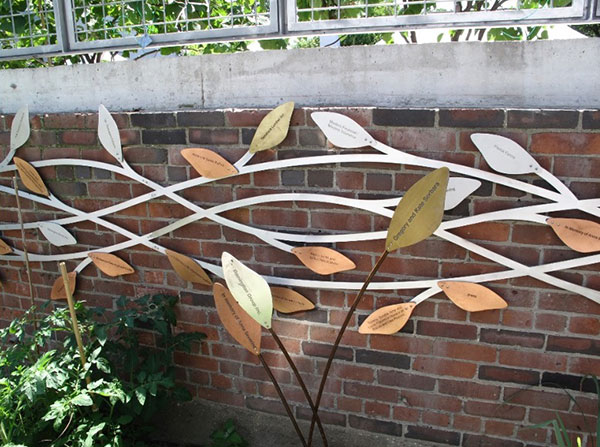
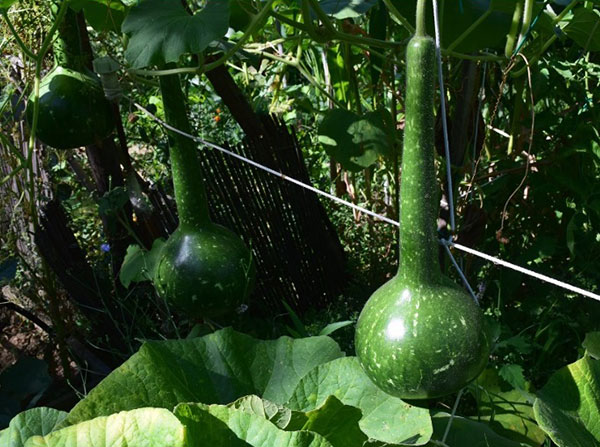
7.2 SOULS AND SOCIETIES
- Natural Growth Project (London, UK)
- Forty Hall Vineyard (London, UK)*
- ReVision Urban Farm (Boston, MA, USA)*
- Earthworks Urban Farm (Detroit, MI, USA)
- Detroit Dreams (Detroit, MI, USA)
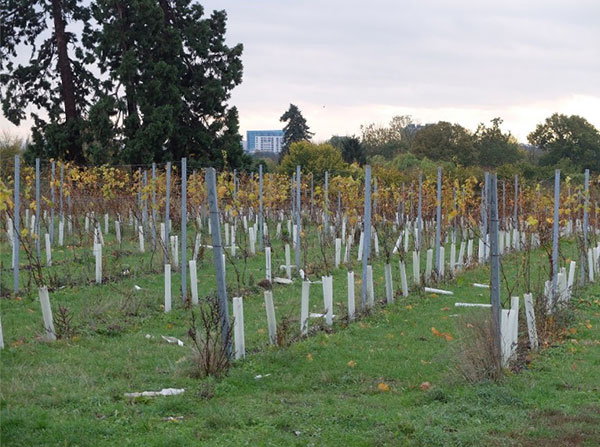
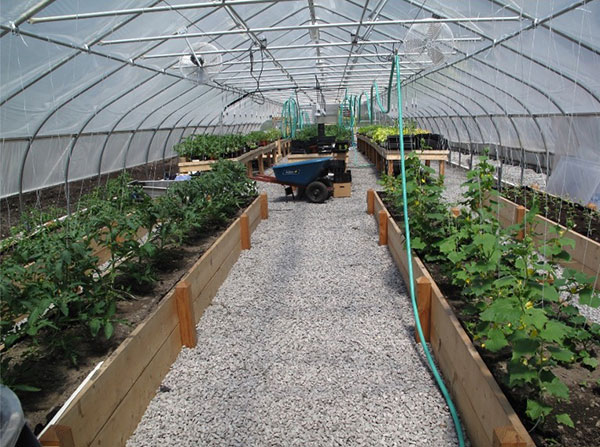
Chapter Anecdotes
Each chapter begins with a brief, autobiographical anecdote that sets the stage for the theme to follow:
- Personal experiences of a young garden entrepreneur.
- Personal experiences of food confraternity.
- Personal experiences of a childhood at the rural-urban interface.
- Personal experiences of visualizing the seasonal round of medieval farming.
- Personal experiences of spying on cottage gardens.
- Personal experiences of visiting an urban site of agrarian memory.
- Personal experiences of visiting a suburban neighbourhood remembering its giving trees.
- Personal experiences of visiting urban farms in Venice.
- Personal experience of learning of gardening as an escape from Nazi oppression.
Chapter Thematic Books

